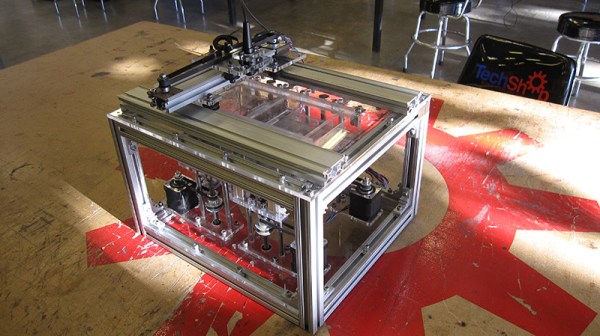Filament printers are here to stay, and in the past year there have been a number of SLA and DLP resin printers that can create objects at mind-boggling high resolutions. Both of these technologies have their place, but printing really complex objects without also printing supports is out of the question.
[Brandon] has been working to create an open source printer using a different technology, selective laser sintering. That’s a laser melting tiny particles of stuff to create an object. This printer can work with any material that can be turned into a powder and melted by a laser, and also has the neat bonus of printing without any supports.
[Brandon]’s printer, Ester, uses small meltable polyester dust as both a print material and support structure. The object to be printed is created by shining a laser over a bed filled with polyester, drawing one layer, and putting another small layer of material over the previous layer.
The machine is using a diode laser, with a few experiments with a 1 Watt diode providing some very nice parts. The mechanics of the machine were built at [Brandon]’s local TechShop, and already he has an IndieGoGo for future development and a $3000 development kit. That’s a bit expensive as far as project printers go, but SLS is an expensive technology to get right; ‘pro’ SLS printers are in the hundreds of thousands of dollars.














